Chainsaws
Cordlesspowertools Canada Online stores have a wide range of Chainsaws Products that are available in different types and prices. Popular brands like Bosch, Dewalt, Hitachi, Dongcheng, Cumi, KPT, Ferm, Black Decker, Makita, Jon Bhandari, Ken, Metabo, Bullet, Planet Power, Stanley, Maktec, Ralli Wolf, AOG, Falcon, Hit-Min, IDeal, Eastman, Fein, Electrex, Craftsman, AEG, Zogo, Xtra Power, DCA, Yuri have a vast range of models available with different designs and functionalities. You can easily browse through the products, compare them and choose the one that best fits your needs.
-
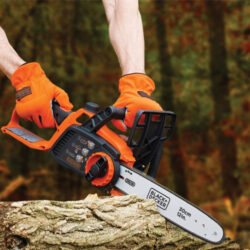
Black+Decker Chainsaws (1)
-
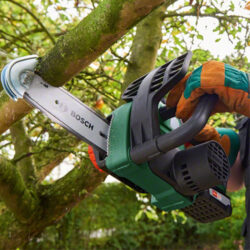
Bosch Chainsaws (1)
-
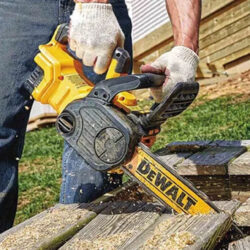
Dewalt Chainsaws (1)
-
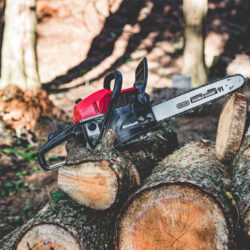
Einhell Chainsaws (1)
-
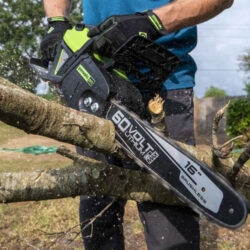
Greenworks Chainsaws (1)
-
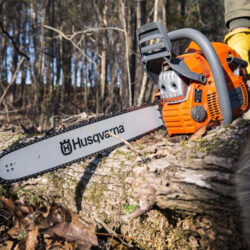
Husqvarna Chainsaw (1)
-
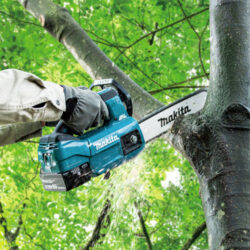
Makita Chainsaws (1)
-
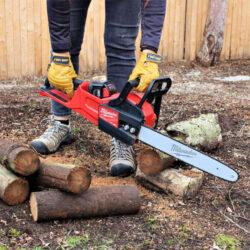
Milwaukee Chainsaws (1)
-
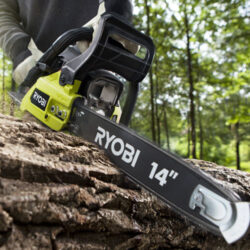
Ryobi Chainsaws (1)
-
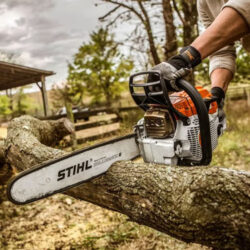
Stihl Chainsaws (1)
-
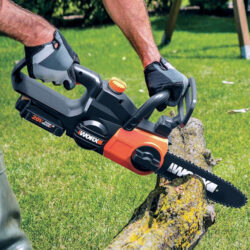
WORX Chainsaw (1)
Master the Cut: Your Guide to Chainsaws
A chainsaw is a powerful and versatile cutting tool that has revolutionized the field of forestry and woodworking. Consisting of a motorized engine, a chain with sharp teeth, and a guide bar, this formidable piece of equipment is designed for efficiently cutting through trees, logs, branches, and various types of wood with remarkable speed and precision. Buy Now Chainsaws The heart of a chainsaw lies in its engine, typically powered by gasoline or electricity, which provides the necessary energy to drive the chain.
Gasoline-powered chainsaws are favored for their portability and raw cutting power, making them essential for professional loggers and arborists who work in remote or rugged environments. Electric chainsaws, on the other hand, are quieter, require less maintenance, and produce zero emissions, making them a popular choice for homeowners and those working in more urban or residential settings.
Buying a chainsaw is a decision that requires careful consideration of several important factors to ensure you get the right tool for your specific needs. Chainsaws come in a variety of models and sizes, each designed for different tasks and user expertise levels.
Types of Chainsaws :
Gas-Powered Chainsaws:
Gas-powered chainsaws are known for their high power and durability, making them suitable for heavy-duty tasks. They are commonly used by professionals in forestry and logging. These chainsaws run on a mixture of gasoline and oil and come in a range of engine sizes, measured in cubic centimeters (cc). They offer excellent cutting performance and can handle large trees and tough wood with ease. Their drawback includes noise, emissions, and the need for regular maintenance.
Electric Chainsaws:
Electric chainsaws are available in both corded and cordless (battery-powered) versions. Corded electric chainsaws are great for light to medium tasks such as pruning and cutting small trees. They are quieter and require less maintenance compared to gas-powered chainsaws. Cordless electric chainsaws offer more mobility but might have limitations in terms of runtime and power. They are suitable for smaller tasks and DIY users.
Cordless Pole Chainsaws:
Cordless pole chainsaws are a variation of electric chainsaws, designed specifically for pruning high branches without the need for a ladder. They feature a long extendable pole that allows you to reach heights safely and easily. These chainsaws are lightweight and maneuverable, making them suitable for home gardeners and those with minimal experience.
Top-Handle Chainsaws:
Top-handle chainsaws are compact and lightweight chainsaws designed for arborists and tree climbers who work while suspended in trees. They have a handle on top that allows for better control when working in challenging positions. Safety precautions are crucial when using top-handle chainsaws, as they are intended for professional use.
Alligator Loppers:
Alligator loppers are a unique type of chainsaw design for cutting larger branches and logs close to the ground. They have a scissor-like design with a set of gripping jaws that hold the material in place while the chainsaw cuts through it. Alligator loppers are safer and more manageable for ground-level cutting compared to traditional chainsaws.
Specialty Chainsaws:
Specialty chainsaws are design for specific tasks. For example, concrete chainsaws are use to cut through masonry and concrete, while rescue chainsaws are use by emergency responders to cut through debris during search and rescue operations. These chainsaws often have specialized chains and features tailored to their specific applications.
Features of Chainsaws :
Engine Type: Chainsaws can be power by gas engines or electricity (corded or cordless). Gas-powered chainsaws provide high power for heavy-duty tasks, while electric chainsaws are quieter, emit fewer fumes, and require less maintenance.
Bar Length: The bar length refers to the cutting length of the chainsaw's guide bar. Longer bars are suitable for cutting larger logs, while shorter bars offer better maneuverability.
Chain Brake: A crucial safety feature, the chain brake stops the chain's rotation in case of kickback or sudden movements, preventing accidents.
Automatic Oiler: Many chainsaws come with an automatic oiling system that lubricates the chain and bar, reducing friction and prolonging their lifespan.
Vibration Dampening: Chainsaws with vibration-reducing features minimize operator fatigue and discomfort during extended use.
Anti-Vibration Handles: These handles reduce vibrations transferred to the user's hands, enhancing comfort and control.
Chain Tensioning: Some chainsaws offer tool-free chain tensioning mechanisms, making it easier to maintain the proper chain tension.
Choke and Primer: Common in gas-powered models, these features aid in cold starting by enriching the fuel mixture and providing easier ignition.
Muffler and Emissions Control: Modern chainsaws often include mufflers and emission-reducing technologies to minimize noise and emissions.
Safety Features: Chainsaws may have additional safety features such as a chain catcher to prevent chain derailment, a throttle lockout to prevent accidental acceleration, and a trigger interlock to prevent unintentional starts.
Benefits of Chainsaws :
Efficiency: Chainsaws expedite tasks like tree felling, pruning, and firewood processing, reducing manual effort and time.
Versatility: Chainsaws can tackle various cutting tasks, from precision pruning to felling large trees, making them versatile tools.
Powerful Cutting: Gas-powered chainsaws deliver high horsepower and torque for demanding cutting applications.
Ease of Use: Modern chainsaws often incorporate user-friendly features like automatic oiling, tool-free chain tensioning, and ergonomic designs.
Precision: Chainsaws allow controlled and precise cuts, important for shaping trees or cutting close to structures.
Portability: Cordless electric chainsaws provide mobility without the constraints of cords or fuel, making them suitable for remote locations.
Safety Considerations:
Safety Gear: Always wear appropriate personal protective equipment (PPE) including a helmet, face shield, hearing protection, gloves, chaps, and steel-toed boots.
Training: Proper training and experience are crucial, especially for using larger and more powerful chainsaws. Attend chainsaw safety courses if needed.
Maintenance: Regularly inspect and maintain your chainsaw to ensure its proper functioning. Dull chains can lead to dangerous kickbacks.
Proper Technique: Learn and apply proper cutting techniques to minimize the risk of kickback and ensure safe operation.
Environmental Factors: Consider weather conditions, terrain, and potential hazards in your work area before operating a chainsaw.
Two-Person Operation: Some tasks, like felling larger trees, are safer with two operators—one cutting and one assisting.
Master the Cut: Your Guide to Chainsaws
A chainsaw is a powerful and versatile cutting tool that has revolutionized the field of forestry and woodworking. Consisting of a motorized engine, a chain with sharp teeth, and a guide bar, this formidable piece of equipment is designed for efficiently cutting through trees, logs, branches, and various types of wood with remarkable speed and precision. Buy Now Chainsaws The heart of a chainsaw lies in its engine, typically powered by gasoline or electricity, which provides the necessary energy to drive the chain.
Gasoline-powered chainsaws are favored for their portability and raw cutting power, making them essential for professional loggers and arborists who work in remote or rugged environments. Electric chainsaws, on the other hand, are quieter, require less maintenance, and produce zero emissions, making them a popular choice for homeowners and those working in more urban or residential settings.
Buying a chainsaw is a decision that requires careful consideration of several important factors to ensure you get the right tool for your specific needs. Chainsaws come in a variety of models and sizes, each designed for different tasks and user expertise levels.
Types of Chainsaws :
Gas-Powered Chainsaws:
Gas-powered chainsaws are known for their high power and durability, making them suitable for heavy-duty tasks. They are commonly used by professionals in forestry and logging. These chainsaws run on a mixture of gasoline and oil and come in a range of engine sizes, measured in cubic centimeters (cc). They offer excellent cutting performance and can handle large trees and tough wood with ease. Their drawback includes noise, emissions, and the need for regular maintenance.
Electric Chainsaws:
Electric chainsaws are available in both corded and cordless (battery-powered) versions. Corded electric chainsaws are great for light to medium tasks such as pruning and cutting small trees. They are quieter and require less maintenance compared to gas-powered chainsaws. Cordless electric chainsaws offer more mobility but might have limitations in terms of runtime and power. They are suitable for smaller tasks and DIY users.
Cordless Pole Chainsaws:
Cordless pole chainsaws are a variation of electric chainsaws, designed specifically for pruning high branches without the need for a ladder. They feature a long extendable pole that allows you to reach heights safely and easily. These chainsaws are lightweight and maneuverable, making them suitable for home gardeners and those with minimal experience.
Top-Handle Chainsaws:
Top-handle chainsaws are compact and lightweight chainsaws designed for arborists and tree climbers who work while suspended in trees. They have a handle on top that allows for better control when working in challenging positions. Safety precautions are crucial when using top-handle chainsaws, as they are intended for professional use.
Alligator Loppers:
Alligator loppers are a unique type of chainsaw design for cutting larger branches and logs close to the ground. They have a scissor-like design with a set of gripping jaws that hold the material in place while the chainsaw cuts through it. Alligator loppers are safer and more manageable for ground-level cutting compared to traditional chainsaws.
Specialty Chainsaws:
Specialty chainsaws are design for specific tasks. For example, concrete chainsaws are use to cut through masonry and concrete, while rescue chainsaws are use by emergency responders to cut through debris during search and rescue operations. These chainsaws often have specialized chains and features tailored to their specific applications.
Features of Chainsaws :
Engine Type: Chainsaws can be power by gas engines or electricity (corded or cordless). Gas-powered chainsaws provide high power for heavy-duty tasks, while electric chainsaws are quieter, emit fewer fumes, and require less maintenance.
Bar Length: The bar length refers to the cutting length of the chainsaw's guide bar. Longer bars are suitable for cutting larger logs, while shorter bars offer better maneuverability.
Chain Brake: A crucial safety feature, the chain brake stops the chain's rotation in case of kickback or sudden movements, preventing accidents.
Automatic Oiler: Many chainsaws come with an automatic oiling system that lubricates the chain and bar, reducing friction and prolonging their lifespan.
Vibration Dampening: Chainsaws with vibration-reducing features minimize operator fatigue and discomfort during extended use.
Anti-Vibration Handles: These handles reduce vibrations transferred to the user's hands, enhancing comfort and control.
Chain Tensioning: Some chainsaws offer tool-free chain tensioning mechanisms, making it easier to maintain the proper chain tension.
Choke and Primer: Common in gas-powered models, these features aid in cold starting by enriching the fuel mixture and providing easier ignition.
Muffler and Emissions Control: Modern chainsaws often include mufflers and emission-reducing technologies to minimize noise and emissions.
Safety Features: Chainsaws may have additional safety features such as a chain catcher to prevent chain derailment, a throttle lockout to prevent accidental acceleration, and a trigger interlock to prevent unintentional starts.
Benefits of Chainsaws :
Efficiency: Chainsaws expedite tasks like tree felling, pruning, and firewood processing, reducing manual effort and time.
Versatility: Chainsaws can tackle various cutting tasks, from precision pruning to felling large trees, making them versatile tools.
Powerful Cutting: Gas-powered chainsaws deliver high horsepower and torque for demanding cutting applications.
Ease of Use: Modern chainsaws often incorporate user-friendly features like automatic oiling, tool-free chain tensioning, and ergonomic designs.
Precision: Chainsaws allow controlled and precise cuts, important for shaping trees or cutting close to structures.
Portability: Cordless electric chainsaws provide mobility without the constraints of cords or fuel, making them suitable for remote locations.
Safety Considerations:
Safety Gear: Always wear appropriate personal protective equipment (PPE) including a helmet, face shield, hearing protection, gloves, chaps, and steel-toed boots.
Training: Proper training and experience are crucial, especially for using larger and more powerful chainsaws. Attend chainsaw safety courses if needed.
Maintenance: Regularly inspect and maintain your chainsaw to ensure its proper functioning. Dull chains can lead to dangerous kickbacks.
Proper Technique: Learn and apply proper cutting techniques to minimize the risk of kickback and ensure safe operation.
Environmental Factors: Consider weather conditions, terrain, and potential hazards in your work area before operating a chainsaw.
Two-Person Operation: Some tasks, like felling larger trees, are safer with two operators—one cutting and one assisting.



































